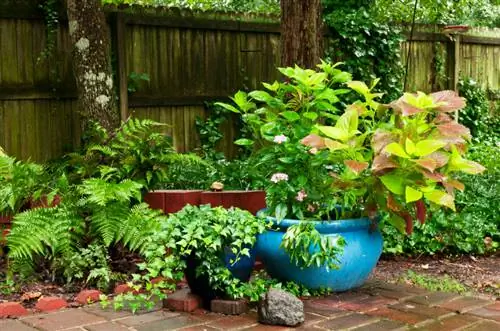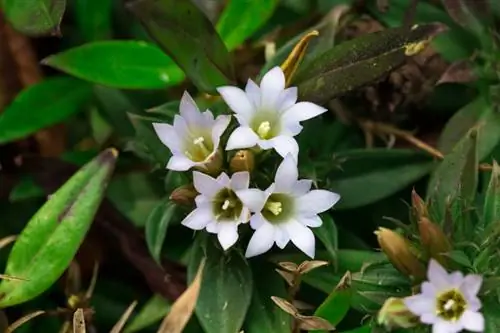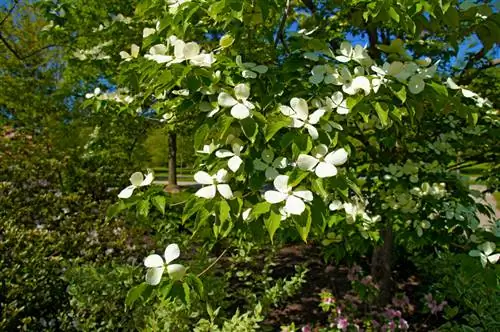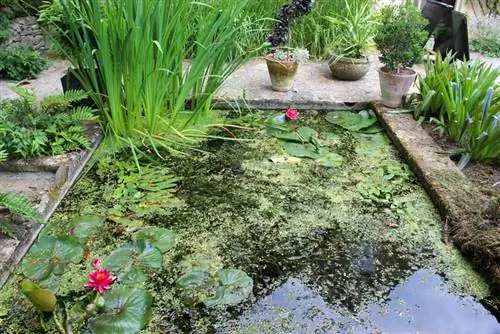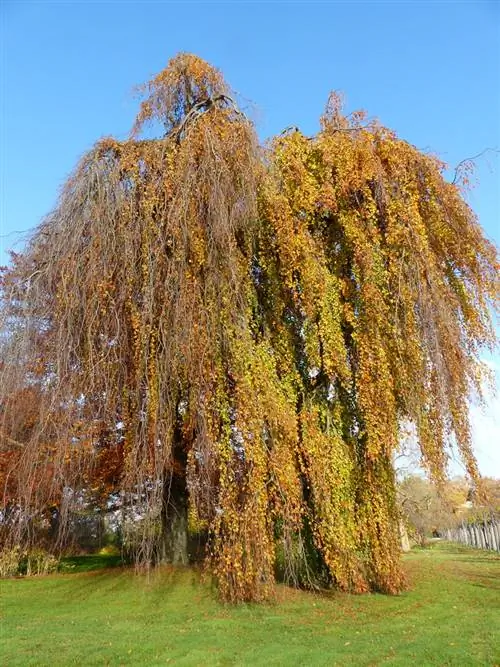- Author admin [email protected].
- Public 2023-12-16 16:46.
- Last modified 2025-01-23 11:20.
So far, ferns in the garden have had a shadowy existence - literally. But since they prefer to grow where other plants struggle, they are extremely valuable. What's more, they require little care.

How do I plant and care for ferns in the garden?
To successfully plant ferns in the garden, choose deciduous or wintergreen species, plant them in a shady or semi-shady location, prepare the soil with humus or compost and pay attention to regular care such as watering, cutting and winter protection.
Which types of ferns are suitable for garden planting?
Those fern species that are deciduous to wintergreen are particularly suitable for designing a garden. The evergreen specimens require significantly more care in our latitudes and need high ambient temperatures all year round.
The following fern species are important for gardens:
- Common Worm Fern (extremely adaptable)
- Swamp fern (for pond areas)
- Clover fern (for pond areas)
- Rib fern (ideal for acidic soils)
- Written fern (for greening masonry)
- Ostrich fern (impressive as a solitaire)
- King fern (up to 150 cm high)
- Wall rue (perfect ground cover)
The answer to the location question: bright, but not sunny
The majority of ferns do poorly in a location where the sunlight is direct and unforgiving. It is therefore better to choose a shady or semi-shady location. Places under coniferous trees such as pines, spruces and larches are visually suitable and optimal in terms of lighting conditions.
Prepare the soil before planting
It is particularly important to loosen up the planting hole properly before placing the fern in the soil. Ideally, carry out the planting campaign in spring and not in autumn. After you have loosened the soil, enrich it with humus or compost.
Ferns with a creeping rhizome are planted flat in the soil. Ferns that grow like clumps, on the other hand, are planted deeper. After covering it with nutrient-rich and slightly acidic soil, the fern is watered generously.
Care procedures: watering, cutting and protecting in winter
The following procedures are recommended:
- Mulch the root area with leaves (€465.00 on Amazon)
- watering in hot and dry times
- fertilize with manure or compost once or twice a year
- shorten deciduous fern species by half in autumn (other half acts as winter protection)
- cut wintergreen ferns in spring before they sprout
- Protect with brushwood and leaves in winter
Tips & Tricks
Ferns look wonderful in the garden next to early bloomers such as crocuses, daffodils, snowdrops and winter aconites. The fern fronds also look excellent as a green background next to small perennials that bloom in summer.

